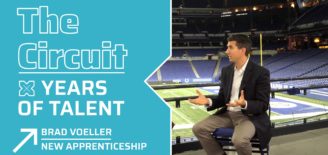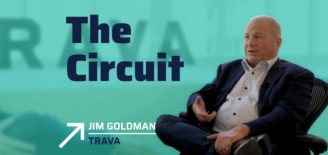Growth strategy starts with human resources
It’s Time To Change the Way Your Organization Leverages Human Resources
Structural is an HR technology startup with offices in Indianapolis. Their products help companies get to know their people better and help employees develop deeper connections with their co-workers and company. Scott Burns, the company’s CEO & co-founder, shared with us more on how HR can take more strategic roles in companies’ performances and how technology can assist.
“People are our most important asset.”
Leaders say this often, but making it more than a cliché is hard. Many CEOs overlook their most logical potential internal leader in this effort: the HR leader.
Several years ago, when a company that I co-founded started to gain momentum, I realized that our continued success depended on the strength of our talent and the engagement of our teams. I knew it was time to get more systematic about investing in our people. The most important step we took was encouraging every leader in the company to form a highly-strategic partnership with our HR and talent leaders.
Giving our HR leaders a seat at the table wasn’t without its challenges. By elevating the voice of HR and talent leaders, we began to move away from an “HR is overhead” mindset, to a place where these professionals had influence on some of the most strategic decisions we made as an organization.
HR leaders, CHROs, Talent Officers, and other human capital leaders earn this seat at the table when they focus on how they can champion and empower others in the organization as opposed to being tactical problem solvers or compliance offers.
This happens most when HR leaders do one or more of the following:
- Take on leadership for serving as an enabler of better organizational performance
- Champion increased collaboration
- Lead the charge in making overhead and compliance tasks easier to leave more room for the HR team (and others) to focus on strategic issues
- Support higher levels of employee engagement and productivity over simply rules and compliance
- Become advocates for transparency and organizational follow through
- Learn what truly drives business value across the organization…visit customers, understand how deals get done, take a support call, sit in on the assembly line or with the product team
CEOs can help HR transition from an overhead to strategic mindset by working to make the following true:
HR owns goals and metrics that connect directly to team performance.
Overhead goal: The HR team will rollout a new HR information system on schedule in Q2.
Strategic goal: The HR team will recruit and support onboarding for the sales organization that will cut our time to productivity from 4 months to 2 months in 2018.
By tying team metrics to HR strategy, you’ll empower HR leaders to apply their expertise to drive performance and make a direct impact on organizational success. This approach eases some of the burden for frontline managers, who often struggle to single-handedly manage performance for a large team, and creates better organizational alignment for more consistent performance.
HR has a seat at the table with managers and leaders outside of hiring and firing.
Overhead topic: Let’s review your hiring plan for the year.
Strategic topic: What systems, space, and support are necessary to increase collaboration between the product and marketing teams?
HR leaders offer a truly unique perspective when it comes to building teams and facilitating growth. HR excel at balancing the short-term needs of leaders and managers with your company’s long-term growth strategy and vision. By elevating your HR teams’ voice when it comes to space, technology, productivity, and culture, your organization stays focused on creating and executing long-term growth strategy, instead of simply reacting to the most pressing tactical day-to-day issues.
HR supports systems and technology across the organization that allow employees to be successful.
Overhead example: How can we get our people to fill out their PTO online more consistently?
Strategic example: What systems can we invest in to make our people more successful?
Historically, HR technology was intended to serve the complex needs of an entire enterprise, resulting in lengthy procurement processes, months-long implementation, and a constant quest to drive increased end-user adoption. Rapid growth and availability of new internal technology, coupled with diverse needs of highly-skilled teams, will mean that HR leaders need to be ready to test, measure, and improve new internal systems quickly and effectively. Executives should encourage internal innovation and help HR leaders lead the charge toward a more iterative, team-centric technology approach to solve challenges and drive the organization forward.
As we’ve grown Structural over the last year, I’ve seen more and more HR leaders gaining resources on their team and shifting to a strategic footing. I can say from experience that it is a shift that pays off.
About the Author
 Scott Burns is the CEO and co-founder of Structural, an Indianapolis-based tech enterprise with a mission to enable all organizations to build better teams and activate highly-skilled talent. Prior to Structural, he co-founded GovDelivery, a leading communication solutions provider for government, which sold to Vista Equity Partners and merged with Granicus in 2016. Scott serves as mentor and consultant to emerging entrepreneurs and is an active angel investor.
Scott Burns is the CEO and co-founder of Structural, an Indianapolis-based tech enterprise with a mission to enable all organizations to build better teams and activate highly-skilled talent. Prior to Structural, he co-founded GovDelivery, a leading communication solutions provider for government, which sold to Vista Equity Partners and merged with Granicus in 2016. Scott serves as mentor and consultant to emerging entrepreneurs and is an active angel investor.





































